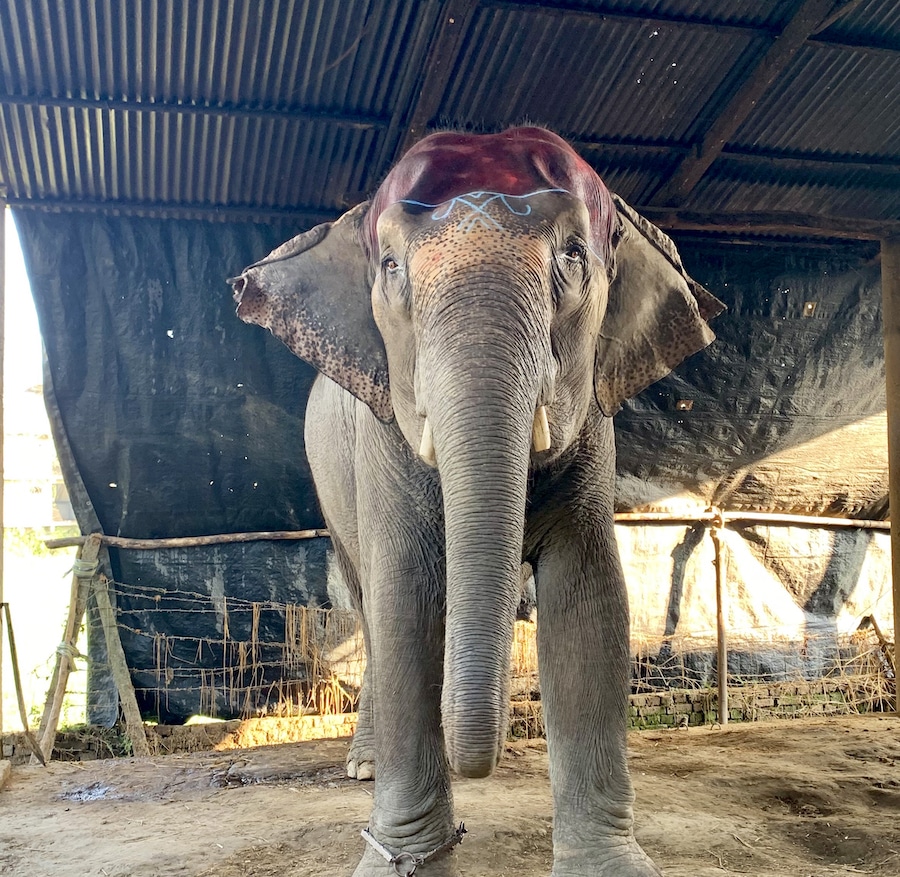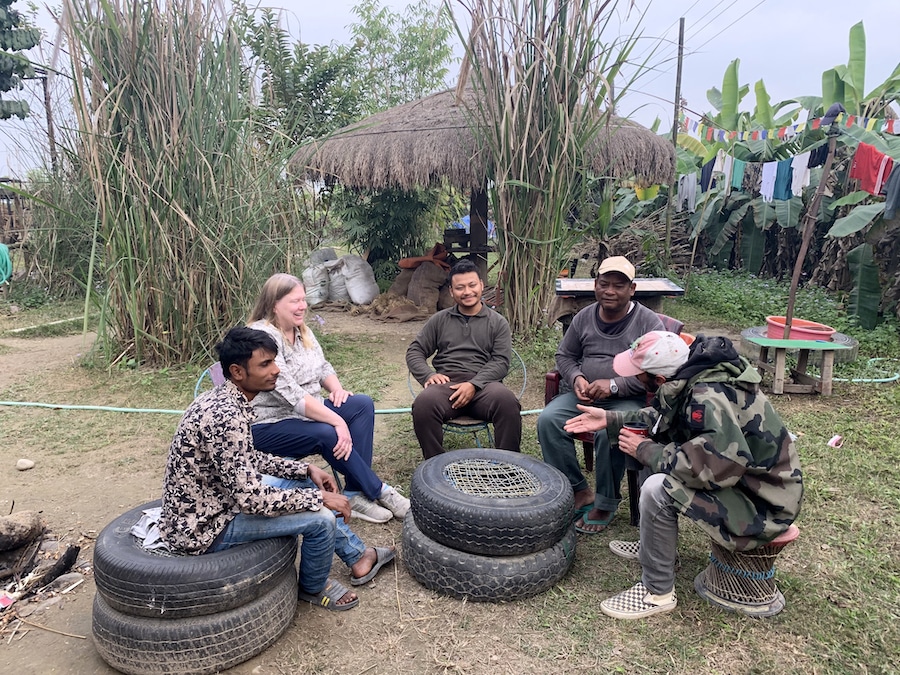
Decorated elephant in Nepal
by Beacon Staff
They hiked the jungles of Nepal and went on safari, where they saw a tiger, a jackal, a rhino, and multitudes of other species.
They even had a brief scare when a wild male elephant, seemingly spooked by a cell phone, pounded towards them, causing them to rapidly cross a small log bridge to maintain a safe distance, an experience that sent their hearts racing (they were in little danger, as they traveled with seasoned guides).
But that was just a fraction of what anthrozoology instructor, Dr. Michelle Szydlowski, and Annabel DeSmet, a senior interested in animal husbandry and cross-cultural research, did during their trip to the Terai, a tropical region on the plain bordering the Indian-Nepalese border.
“This trip allowed me to continue my decade-long work with elephants, rhinoceros, mahouts, and community members in Nepal,” said Szydlowski, who traveled to Nepal in January to conduct research aimed at improving the lives of captive elephants and mahouts there.
The visit mostly focused on documenting elephants’ living and working conditions, and required many hours spent in private stables gathering data for health and welfare assessments and body condition scoring. Szydlowski even tracked down elephant specimens she had studied in the past but whom had changed stables, were sold or renamed. This all with the aim of determining the impact COVID and COVID-related lockdowns had on Nepal’s captive elephant population.
While the trip was research-focused, it also had a strong social component, as part of the impetus of Szydlowski’s work is to improve the lives of the mahouts — the elephants’ caretakers.
Beacon student Annabel DeSmet interviewing mahouts about their living conditions in Nepal.
The team conducted many interviews with the mahouts to assess their attitudes, backgrounds, needs, and knowledge in a variety of elephant-related and non-elephant-related areas. They also relied on study participants’ observation of mahouts and elephants, interviews with owners, community members and NGOs (non-governmental organizations).
It was DeSmet, in fact, who conducted many of those interviews. Szydlowski said she was impressed by her ability to “jump right in” and connect with her subjects, treating them as equals (the mahouts are a marginalized community and are often treated poorly by those in other castes or socioeconomic groups).
“I was very impressed with Annabel’s adaptability to the culture, foods, research and her flexibility,” said Szydlowski. “She jumped in with both feet and was amazing at getting everything done. As this was her first experience with ethnography, I was impressed by how at ease she was interviewing.”
DeSmet, for her part, did everything she could to immerse herself in the culture, first by participating in cultural awareness seminars at Beacon College, and then by connecting with the mahouts as much as possible, including having dinner with them at the stables on occasion.
The lives of captive elephants and those of the mahouts are closely linked, as is their welfare, and efforts by well-meaning NGOs have not always been successful. DeSmet said she hopes to change that.
“I think my most important takeaway from this experience was that regardless of where you go, relationships with animals are complicated,” she said. “It’s inescapable, and even more so when you live near large and dangerous wildlife. This has definitely fueled my desire to continue with cross-cultural research, and my interest in husbandry and welfare has not wavered. I’d like to continue pursuing this kind of work, and I’d like to continue pursuing it in the most ethical way possible,” she added.

Beacon anthrozoologist Dr. Michelle Szydlowski chats with locals in Nepal.
Besides acting as lead researcher, Szydlowski also represented the conservation group for whom she serves as board chair, the Katie Adamson Conservation Fund, which purchased needed items for mahouts, including jackets, blankets, and hats, and which, in addition, financed a small portion of her trip to Nepal. Szydlowski and DeSmet also visited Nepalese students supported by the conservation fund and distributed supplies from personal donations to a local orphanage (another Beacon student, Meghan Woerner, assisted in this last effort along with the research team).
Szydlowski and Annabel will be presenting academic papers at the Anthrozoology as International Practice Conference in September to share the study’s findings. In addition, they will both present at the Animals in Tourism Conference in March and at a Katie Adamson Conservation Fund event in April, among others.
Szydlowski also recently published a research paper on elephants, which you can read about here as well as a paper on carnivore mortality in Nepal.